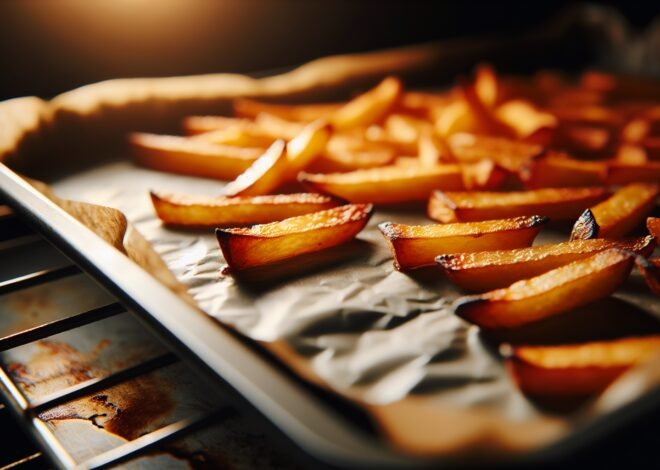
How to Store Baked Goods to Prevent Staleness?
Baked goods like bread, cakes, and cookies can go stale if not stored correctly. In this guide, we’ll show you the best methods for keeping your baked goods fresh and moist, whether you’re storing them at room temperature, in the fridge, or freezing them for later.
Why Baked Goods Go Stale
Baked goods have a limited window of freshness. Understanding why they go stale helps in preserving their quality longer. Let’s dive into the factors that contribute to staleness and how to counteract them effectively.
How Air Exposure Affects Freshness
Air exposure is a primary culprit in the staling process. Oxygen in the air interacts with baked goods, leading to moisture loss. This results in a dry and crumbly texture, diminishing the delightful experience of freshly baked treats. Keeping baked goods sealed reduces air exposure and helps maintain their original texture and taste.
Understanding the Shelf Life of Different Baked Goods
The shelf life of baked goods varies greatly. Bread, due to its moisture content, usually lasts a few days before staling starts. Cookies can maintain their quality for a bit longer, especially when stored properly. Pastries, with their delicate layers, are prone to rapid staleness if not stored under optimal conditions. Knowing these nuances helps in planning consumption and storage.
Common Storage Mistakes for Baked Goods
Poor storage choices can accelerate staleness. Common mistakes include leaving bread in paper bags, which don’t seal in moisture, or refrigerating items that are best kept at room temperature. Understanding and avoiding these errors can keep your baked goods fresh and enjoyable longer.
Best Practices for Storing Breads and Cakes
Preserving the freshness of breads and cakes requires more than just tossing them in a container. Employing the right storage techniques extends their shelf life, keeping them as delicious as the day they were baked.
Using Airtight Containers for Freshness
Airtight containers are a baker’s best friend. They prevent moisture loss and protect against air exposure, which is essential for keeping breads and cakes fresh. Choose containers that fit snugly to minimize air pockets. Glass containers are preferable as they don’t retain odors, preserving the true flavor of your baked delicacies.
Freezing Baked Goods for Later Use
Freezing is an excellent option for extending the life of baked goods. Wrap breads and cakes tightly in plastic wrap or aluminum foil before placing them in a freezer bag. This double-wrapping method ensures they remain moist and flavorful when defrosted. Label and date each package to manage your stock effectively.
Wrapping and Storing Cakes and Muffins
Proper wrapping is key for cakes and muffins. Use wax paper or plastic wrap to cover them gently, ensuring no part is exposed. Place muffins in a single layer within an airtight container to avoid squishing. Store at room temperature for short-term freshness or freeze for longer periods.
Best Practices for Storing Cookies and Pastries
Cookies and pastries have their own storage needs to maintain their texture and flavor. Learning how to store these treats can keep them tasting fresh and delicious, whether you crave a crispy cookie or a flaky pastry.
Keeping Cookies Crispy or Chewy
Storage can significantly affect a cookie’s texture. For crispy cookies, choose a container that allows a bit of airflow, such as a loosely covered cookie jar. For chewy cookies, seal them tightly in an airtight container. Adding a slice of bread to the container can help maintain moisture balance for chewy textures.
Using Storage Tins for Pastries
Pastries benefit from the solid structure of a tin, which guards against crushing. Line tins with parchment paper to prevent sticking. Ensure the lid fits properly to keep pastries fresh and flavorful. This method not only preserves texture but also adds a touch of nostalgia with classic storage methods.
Avoiding Staleness in Freezing
To freeze pastries without losing their freshness, wrap each item individually in plastic wrap before placing them in a freezer bag. This prevents moisture loss and ice crystals formation. Defrost pastries slowly by transferring them to the fridge overnight for the best results.
Conclusion
Keeping baked goods fresh for longer can be a challenge, but with the right storage methods, you can prevent them from going stale. By using airtight containers, freezing when necessary, and storing in the right conditions, your baked goods will stay moist and delicious for days. With these tips, you’ll enjoy fresh-tasting treats whenever you want them.
FAQ
How should I store cakes and cookies to keep them fresh?
Store cakes in an airtight container to maintain moisture. Keep cookies in a sealed jar or container to preserve their texture. Use wax paper between layers if stacking to prevent sticking.
Can I freeze baked goods like bread and cakes?
Absolutely, freezing is an excellent way to extend the shelf life. Wrap baked goods tightly in plastic wrap or foil, then place them in a freezer-safe bag. Thaw at room temperature when ready to enjoy.
How long can baked goods stay fresh at room temperature?
Typically, baked goods can stay fresh for 2-5 days at room temperature. Store them in a cool, dry place and use airtight containers for best results.
What’s the best way to prevent cakes from drying out?
To avoid dryness, seal cakes with plastic wrap and store them in an airtight container. Adding a slice of bread inside the container can help maintain moisture.
Should I refrigerate baked goods?
Refrigeration isn’t always necessary and can sometimes dry out baked items. However, refrigerate those with perishable fillings or frostings to ensure food safety.
How can I prevent cookies from becoming stale?
Place cookies in an airtight container and add a piece of bread to help retain their softness. Keep the container sealed tightly and store it at a consistent temperature.











